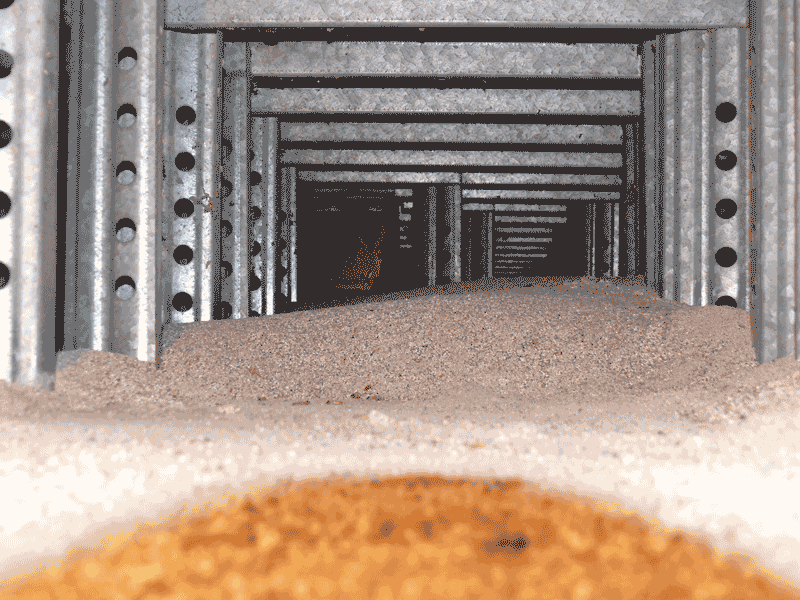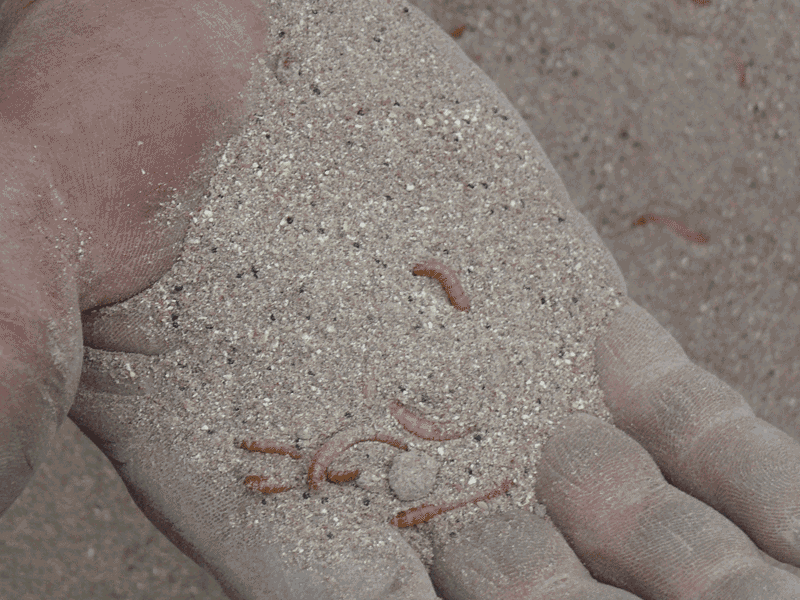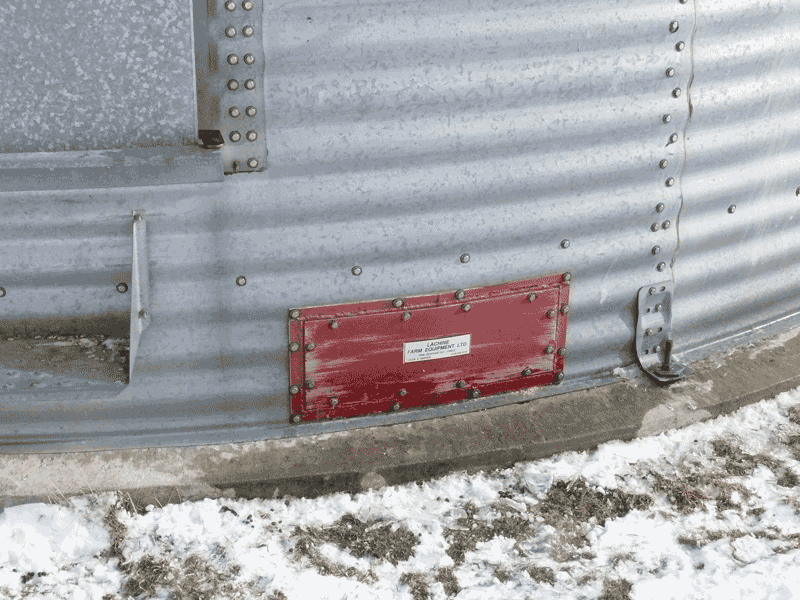Cropside: What’s under the bin floor
AGRONOMIC INFORMATION FROM ONTARIO'S CROP SPECIALISTS

THE IMPORTANCE OF GOOD STORAGE MANAGEMENT
MOST OF YOUR crop that is stored on-farm will end up in grain bins. With harvest approaching, now is the time to get the bins ready for the new crop. Here are a few suggestions for good storage management that will reduce frustrations when you actually get to harvest.
get rid of the old crop
Don’t get me wrong. I am not suggesting you throw out your old crop, but move any leftover grain or beans into a smaller bin. Adding new crop on top of old can be disastrous from a stored grain pest standpoint. Moving the old grain may take some time but you will avoid future headaches. Clean up any spoiled grain around your storage facility.
PHOTO 1: Material accumulated was 12″ deep in the worst area. The floor stands are 14″ high.

PHOTO 2: These meal worms are alive and well living in the fines below the floor.

PHOTO 3: Blow out doors are installed in the skirt of the bin to aid in removal of material under the aeration floor.

clean under the aeration floor
Human nature is such that we do not concern ourselves with things that cannot be seen. Aeration floors have perforations to allow air flow from the plenum up through the grain mass above. Since these perforations allow air through, they can also allow fines to fall down into the plenum. The style of flooring, as well as the number of fill and unload cycles, will all affect the amount of material that accumulates. Drying bins and bins with chisel cut perforations allow the most material through into the plenum. Newer floor designs allow for the removal of alternate floor planks, making the clean-up of accumulated material somewhat less painful. With other floors, the removal of panels is from one side with the last panel installed being the first one removed.
Accumulation of fines under the aeration floor is cause for concern on two fronts. Since accumulated fines occupy space under the floor they can restrict air flow (Photo 1). Any additional restrictions to the aeration air in the plenum below the floor will result in higher static pressures and reduced air flow rates through the bin contents. The second problem is stored grain pests. Pests can (and do) live in the fines that accumulate under the aeration floor (Photo 2). Once you clean out the upper portion of the bin, these pests just move down to their summer home and wait for the new crop.
Companies are now manufacturing blowout doors that are strategically installed around the circumference of the bin. These doors are bolted into the skirt of the bin below the level of the perforated floor (Photo 3). When the bin is full and the material under the floor is dry, the doors are removed one at a time and then the fan is operated. This blows out any dry material. The door is reinstalled and another is opened. The process is repeated all the way around the bin.
clean and treat empty bins
Before putting new crop into your storage bins, clean out any remaining grain or beans. Treat the inside of the bin with diatomaceous earth to control any stored grain pests that remain in the bin. Follow application recommendations carefully. If you exceed the recommended rate of diatomaceous earth, augers will have to work harder to move the grain and in severe cases they can plug. •






















